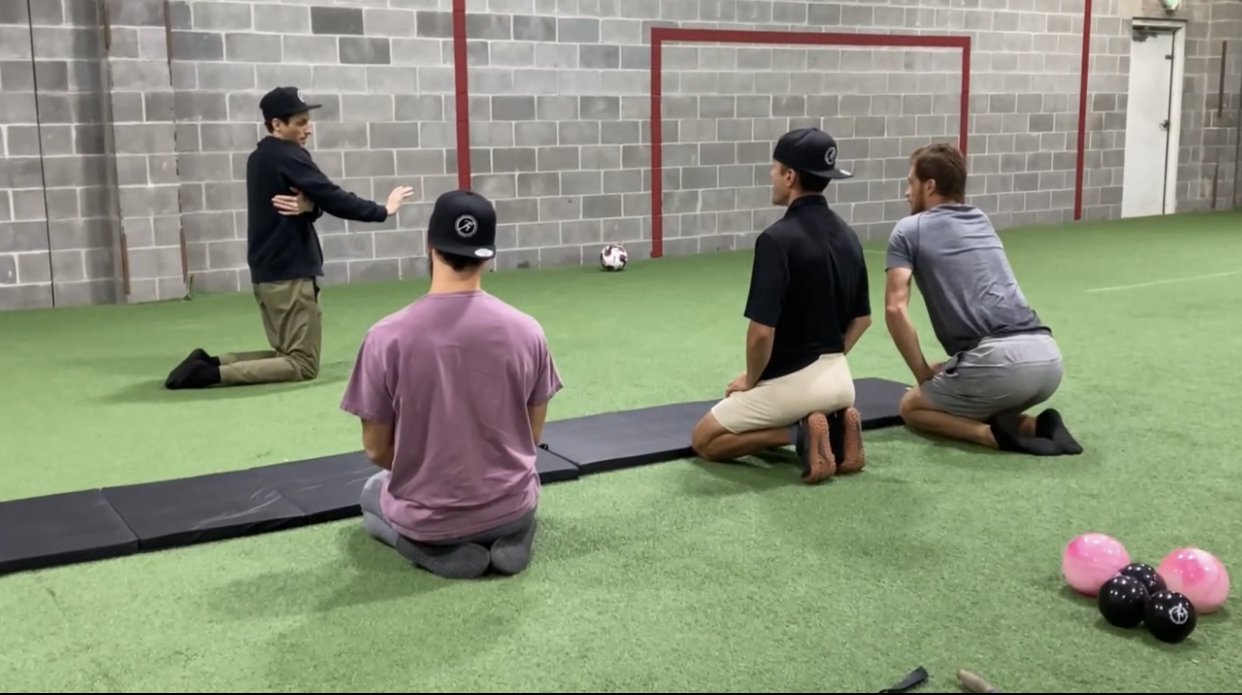
One of a Kind Fitness is an upgrade on traditional training. With the understanding that the human body is naturally developed to advance from crawling to walking to running, and knowing that the primary movement pattern of a human is the gait cycle, we’ve been able to modify some traditional strength training exercises while also creating some of our own. These exercises are designed to get you out of pain, so that you can stay healthy while getting stronger to enjoy your life. Our goal is to build strength and stability while reducing compensation patterns that affect our gait and other natural movement mechanics.
WHAT IS OKF TRAINING?
Learn from the Crawl
Crawling is an important milestone in a baby's development. It helps them develop their muscle strength and coordination, and it also helps them learn how to explore and interact with their environment. Crawling helps babies practice using their hands and arms to push off the ground and move their bodies forward. It also helps them develop balance and coordination, as they have to coordinate the movement of their arms and legs in order to crawl effectively. Overall, crawling is an important step in a baby's physical and cognitive development, and it is an essential foundation for many other developmental milestones that will come later.
Understanding Balance
Just standing on two feet requires balance because it involves maintaining the body's center of mass over its base of support. When a person stands upright, their center of mass is located just above the pelvis, and their base of support is the area beneath their feet. In order to maintain balance, the body must be able to adjust the position of the center of mass over the base of support.
To stand on two feet, a person must coordinate the movement of their limbs with their trunk and head movements, and they must also adjust their balance based on the surface they are standing on and any changes in their environment. The vestibular system, which is located in the inner ear, plays a crucial role in balance and coordination. It helps the brain process information about the body's position in space and its movement. The visual system, muscles, and joints also contribute to balance.
Learning to stand on two feet is a complex process that requires the coordination and integration of several different systems in the body. With practice, babies are able to develop the balance and coordination needed to stand and walk independently.
THE SPINAL ENGINE THEORY
The spinal engine theory, developed by Serge Gracovetsky in the 1980’s, alludes that the spine is the engine that drives reciprocal motion and human locomotion. The prevailing thought previously was that of the legs being responsible for motion, while the torso, arms, and head were just along for the ride. However with the spinal engine theory the limbs are nothing more than an extension of spine motion. They amplify the movements of the pelvis producing motion. The spine is truly the engine that drives the pelvis.
Compensation Patterns
Compensation patterns in the gait cycle refer to changes in a person's walking pattern that may occur in response to an injury or other condition that affects their ability to walk normally. These patterns may involve changes in the way the person stands, moves their limbs, or shifts their weight.
There are several different types of compensation patterns that can occur during the gait cycle, and they may involve changes in any of the following:
Foot placement: A person may change the way they place their feet on the ground, such as by turning the feet inward or outward, to compensate for an injury or condition.
Limb movement: A person may change the way they move their limbs, such as by swinging them more widely or taking shorter steps, to compensate for an injury or condition.
Weight distribution: A person may shift their weight differently to compensate for an injury or condition, such as by leaning more heavily on one side or using assistive devices like crutches or a cane.
Compensation patterns in the gait cycle can occur in response to a variety of injuries or conditions, including musculoskeletal disorders, neurological conditions, and problems with balance or coordination. These patterns can help a person maintain their mobility and independence, but they may also cause additional strain or discomfort and may increase the risk of falls.























